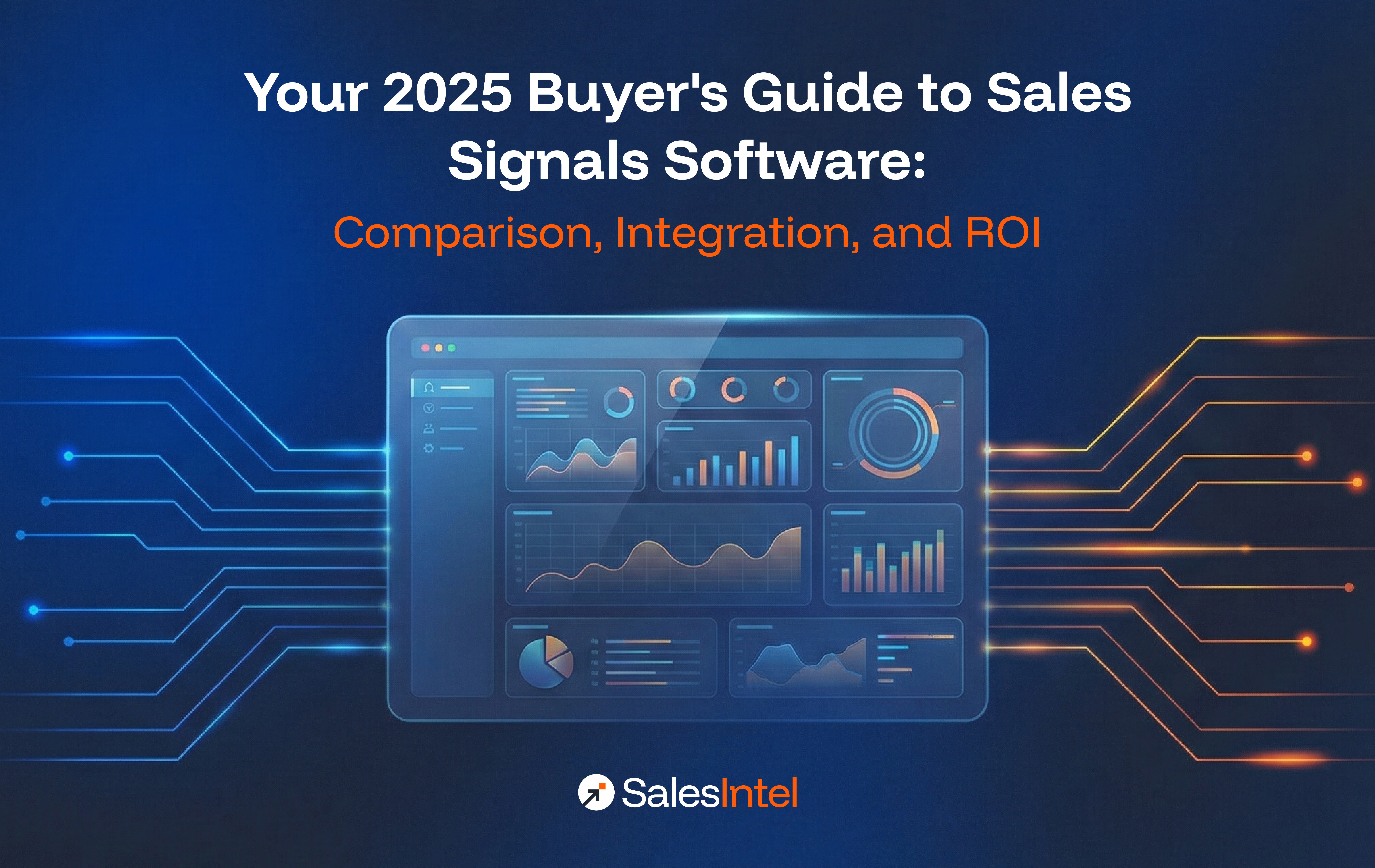Leveraging customer data has become paramount for optimizing your Go-To-Market (GTM) strategy. Customer data encompasses a wealth of information gathered from various touchpoints, offering insights into customer behavior, preferences, and needs. By harnessing the power of this data, you can fine-tune your GTM motion to deliver personalized experiences, target the right audience, and drive sustainable growth.
In this article, we will explore the significance of customer data and customer data management within your GTM motion. We’ll cover the different types of customer data you should focus on and discover the tools that can help you leverage it to the fullest extent.
What is Customer Data?
Customer data is information collected from individuals interacting with a company’s products, services, or platforms, including demographics, purchase history, preferences, behavior patterns, and feedback. This data is typically gathered through various channels, such as online transactions, surveys, social media interactions, and customer service interactions.
Why is Customer Data Important?
Customer data holds significant value across industries for several reasons:
1. Personalization:
Personalized interactions enhance customer satisfaction and loyalty. Understanding customer preferences and behaviors allows you to tailor your offerings, marketing messages, and customer experiences to individual needs.
2. Targeted Marketing:
Understanding your audience through data analysis is crucial for targeted marketing. By collecting and segmenting customer data, analyzing trends, and creating detailed buyer personas, you can tailor your campaigns to resonate with specific segments’ preferences and behaviors. Utilizing personalized content and optimized channels, you’ll deliver messages that address their needs effectively. Continuously measuring campaign performance allows for refinement and optimization, ensuring that your marketing efforts are both efficient and impactful.
3. Improved Products and Services:
Customer data provides valuable insights into customer needs, pain points, and preferences. This information helps you refine existing products or develop new ones that better meet customer expectations.
4. Retention and Loyalty:
By leveraging customer data, you can anticipate customer needs, proactively address issues, and provide exceptional customer service. This helps foster long-term relationships and promotes customer loyalty.
5. Competitive Advantage:
Leveraging customer data effectively can provide a competitive edge by offering insights into emerging market trends and competitor weaknesses. Analyzing demographics, purchasing behavior, and feedback helps anticipate changing consumer needs and preferences, giving you an advantage in innovation and tailored offerings. This proactive approach keeps you ahead of the competition and fosters long-term customer loyalty and business growth.
6. Revenue Growth:
By understanding customer behavior and preferences, you can identify opportunities to upsell or cross-sell products and services, ultimately increasing revenue.
7. Risk Mitigation:
Analyzing customer data can help you identify potential risks, such as churn or fraud, and allow you to take proactive measures to mitigate these risks.
What Are the Types of Customer Data Available
There are six types of customer data that every business should focus on:
Demographic Data
Demographic data includes information about your customers, such as age, gender, income, education level, marital status, and geographic location.
Importance:
-
Targeted Marketing:
Demographic data helps you understand the specific demographics you are catering to. By knowing your customers’ age, gender, location, and other demographic details, you can tailor your marketing strategies to resonate with your target audience.
-
Product Development:
Understanding the demographics of your customer base can guide product development efforts. For example, if most of your customers are millennials, you may prioritize mobile-friendly features or products that align with their lifestyle.
-
Customer Segmentation:
Demographic data allows you to segment your customers into groups with similar characteristics. This segmentation enables more personalized marketing, product recommendations, and customer experiences.
How Demographic Data is Collected
-
Lead Generation Forms:
These forms, often found on websites or landing pages, typically request information such as name, email, age, gender, location, and sometimes occupation or income level.
-
Customer Surveys:
Surveys distributed via email, social media, or in-person interactions can gather customer demographic information. Questions may include age, gender, household size, income, education level, and more.
-
Website Analytics:
Website analytics tools track visitor demographics based on data like IP addresses, browser cookies, and user accounts. This data provides insights into website visitors’ geographic location, device usage, and other demographic characteristics.
-
Social Media Insights:
Social media platforms provide insights into the demographics of followers and users, including age, gender, location, interests, and behaviors. This information is valuable for targeting specific audience segments with marketing campaigns.
-
Purchase History:
Analyzing past purchases can reveal customer demographic trends, such as age groups, geographic regions, and product preferences.
-
Third-Party Data Providers:
Businesses may also purchase demographic data from third-party providers, which aggregates information from various sources such as public records, surveys, and consumer databases.
Firmographic Data
Firmographic data refers to business information, including size, industry, revenue, location, and organizational structure.
Importance:
-
B2B Targeting:
Understanding a company’s industry, size, and structure helps tailor marketing and sales efforts to address its specific needs.
-
Market Analysis:
Analyzing firmographic data can provide insights into market trends, competitor landscapes, and potential areas for expansion or partnership.
-
Customized Offerings:
By knowing a business’s characteristics, such as its size or revenue, you can customize your offerings to meet each client’s unique needs.
How Firmographic Data is Collected
-
Company Websites:
Gathering information from company websites, such as About Us pages, product pages, or press releases.
-
Business Directories:
Accessing business directories like Dun & Bradstreet, Hoovers, or industry-specific directories to gather firmographic details.
-
Publicly Available Data:
Extracting data from public sources like government websites, regulatory filings, or industry reports.
Technographic Data
Technographic data includes information about the technologies and software your target audience uses, such as CRM systems, marketing automation platforms, and communication tools.
Importance
-
Targeted Sales and Marketing:
Technographic data helps you identify prospects likely to be interested in your products or services based on their technologies. This information enables more targeted sales and marketing campaigns.
-
Ideal Customer Profile (ICP):
Technographic data is crucial in defining your Ideal Customer Profile (ICP). By analyzing the technologies your best customers use, you can identify patterns and characteristics that represent your ideal prospects. This allows you to target companies with similar technology profiles, increasing the likelihood of successful sales engagements and better aligning your offerings with the needs of your target market.
-
Competitive Insights:
Understanding the technology landscape of your target market provides insights into your competitors’ strategies. For example, suppose your analysis reveals that many of your competitors’ customers are using outdated or ineffective technology solutions. In that case, it may indicate an opportunity for you to offer a more advanced or efficient alternative. Similarly, if you notice a growing trend of adoption for a particular type of software among your target audience, it could signal a shift in market preferences that you can capitalize on by aligning your offerings accordingly.
-
Product Compatibility:
Technographic data helps ensure your products are compatible with your potential customers’ existing tech stacks.
How Technographic Data is Collected
-
Website Tracking:
Analyzing the technologies used on a company’s website, such as tracking pixels, JavaScript tags, or server logs.
-
B2B Data Providers:
Utilizing B2B data providers such as SalesIntel to access comprehensive technographic data. These providers aggregate information from various sources and offer databases enriched with details about the technologies used by companies in your target market.
-
API Integrations:
You can get Techongrahic data by integrating with third-party tools or APIs that provide insights into your audiences’ software stack.
-
Public Databases:
Accessing publicly available information from sources like LinkedIn, company websites, or industry reports that may mention a company’s technology stack.
Quantitative Data
Quantitative data consists of numerical information that can be measured and analyzed, such as sales figures, website traffic, customer counts, and conversion rates.
Importance:
-
Performance Metrics:
Quantitative data provides objective measures of business performance, allowing you to track progress toward goals, identify trends, and make data-driven decisions.
-
ROI Analysis:
Quantitative data helps you evaluate the return on investment (ROI) of various marketing campaigns, initiatives, and strategies.
-
Predictive Analysis:
Analyzing historical quantitative data allows you to predict future trends and behaviors, enabling proactive decision-making.
How Quantitative Data is Collected
-
Transactional Records:
Recording customer transactions, purchases, order history, and payment details.
-
Web Analytics:
Tracking website metrics such as traffic, bounce rates, conversion rates, and time spent on page.
-
Surveys and Feedback Forms:
Gathering quantitative feedback through rating scales, multiple-choice questions, or numerical responses by using online form builders.
Buyer Intent Data
Buyer intent data reveals the signals or indicators that potential customers are actively researching or intending to make a purchase.
Importance:
-
Timely Engagement:
Buyer intent data allows you to identify potential customers in the decision-making process and engage with them at the right moment, increasing the likelihood of conversion.
-
Personalization:
Understanding buyer intent enables you to tailor your messaging and offers to match potential customers’ specific needs and interests.
-
Lead Prioritization:
By prioritizing leads based on their level of intent, you and your sales teams can focus your efforts on prospects that are most likely to convert, improving efficiency and effectiveness.
How Intent Data is Collected
-
Website Behavior Tracking:
Analyzing website visits, page views, and content consumption patterns to identify intent signals.
-
Search Engine Monitoring:
Monitoring search engine queries, keywords, and search trends to understand user intent.
-
Social Media Monitoring:
Tracking social media interactions, comments, and discussions related to specific products or solutions.
-
Third-Party Data Collection:
Brands like Bombora and SalesIntel provide buyer intent data and predictive intent data to their users.
Qualitative Data
Qualitative data provides insights into customer opinions, attitudes, motivations, and behaviors through open-ended responses, feedback, reviews, and observations.
Importance:
-
Understanding Customer Sentiment:
Qualitative data helps you understand how customers feel about your products, services, and brand, allowing for proactive improvements and enhancements.
-
Product Development:
Insights from qualitative data can inform product development by highlighting areas for improvement or unmet customer needs.
-
Brand Perception:
Qualitative data offers valuable insights into how customers perceive your brand, helping you refine your messaging and positioning to better align with customer expectations.
How Qualitative Data is Collected
-
Surveys and Interviews:
Conducting in-depth interviews or surveys that allow respondents to provide detailed qualitative feedback.
-
Focus Groups:
Bringing together a small group of participants to discuss and share their opinions on specific topics or products.
-
Social Media Listening:
Monitoring social media conversations, comments, and reviews to gather qualitative insights into customer sentiment and preferences.
Each type of customer data plays a vital role in informing business decisions, enhancing customer experiences, and driving growth. By effectively leveraging these different types of customer data, you can better understand your customers and market dynamics, leading to more strategic and successful outcomes.
What is Customer Data Management
Customer data management (CDM) involves collecting, storing, organizing, and utilizing customer data to improve business operations, enhance customer experiences, and drive growth. Here’s a structured approach to effective customer data management:
1. Data Collection:
- Identify Relevant Data:
Determine the types of customer data relevant to your business goals, such as demographic information, purchase history, interactions, and preferences.
- Select Data Sources:
Collect data from various sources, including CRM systems, website analytics, social media platforms, surveys, and customer feedback channels.
- Data Governance:
Establish policies and procedures for collecting data ethically and in compliance with regulations such as GDPR and CCPA. Ensure transparency and obtain the necessary consent from customers for data collection.
2. Data Storage and Organization:
- Centralized Data Repository:
Maintain a centralized database or data warehouse to store all customer data securely. This allows for easy access and retrieval of information.
- Data Integration:
Integrate data from different sources to create a unified view of the customer. Use data integration tools to ensure consistency and accuracy across datasets.
- Data Quality Management:
Implement data quality measures to maintain the integrity of the data. Regularly clean and validate data to remove duplicates, correct errors, and ensure accuracy.
3. Data Analysis:
- Data Exploration:
Explore the data to understand patterns, trends, and correlations. Utilize data visualization tools to uncover insights and make data more accessible.
- Segmentation:
Segment customers based on demographics, behavior, or other criteria to personalize marketing campaigns and customer experiences.
- Predictive Analytics:
Use predictive modeling techniques to forecast customer behavior, identify potential churn risks, and anticipate future trends.
4. Data Utilization:
- Personalized Marketing:
Use customer data to personalize marketing messages, offers, and content to target specific segments and improve engagement.
- Product Development:
Leverage customer feedback and usage data to enhance existing products or develop new ones that better meet customer needs.
- Customer Service Optimization:
Utilize customer data to improve support processes, tailor interactions, and address common pain points.
5. Data Security and Compliance:
- Data Security:
Implement robust security measures to protect customer data from unauthorized access, breaches, and cyber threats.
- Compliance:
Ensure compliance with data protection regulations such as GDPR, CCPA, and HIPAA. Regularly review and update policies to reflect changing requirements.
6. Continuous Improvement:
- Feedback Loop:
Encourage feedback from customers and stakeholders to validate assumptions, gather additional insights, and improve data management practices.
- Performance Monitoring:
Monitor key performance indicators (KPIs) continuously to evaluate the effectiveness of data management efforts and make adjustments as needed.
Effective customer data management is essential for gaining valuable insights, driving informed decision-making, and building meaningful customer relationships. By following these steps and adopting best practices, you can unlock the full potential of your customer data to achieve your business objectives.
What Tools Can Help Me Leverage Customer Data?
Customer Relationship Management (CRM) Tools:
CRM tools help you manage and analyze customer interactions and data throughout the customer lifecycle.
-
Salesforce:
A popular CRM platform that allows you to track customer interactions, manage sales processes, and analyze customer data.
-
HubSpot CRM:
Offers CRM functionalities along with marketing and sales automation tools to manage and analyze customer data effectively.
-
Zoho CRM:
Provides features for contact management, lead tracking, sales pipeline management, and advanced analytics.
Marketing Automation Tools:
These tools help automate marketing processes and campaigns while providing insights into customer behavior and engagement.
-
Mailchimp:
Offers email marketing automation, audience segmentation, and reporting features to help you analyze and leverage customer data for targeted marketing campaigns.
-
HubSpot Marketing Hub:
Provides marketing automation tools, lead nurturing, and analytics to optimize marketing strategies based on customer data.
-
Adobe Campaign:
A comprehensive marketing automation platform that integrates with Adobe’s other tools, offering advanced analytics and personalization capabilities.
Analytics Platforms:
These tools help analyze and interpret customer data to derive actionable insights.
-
Google Analytics:
Provides web analytics and insights into website traffic, user behavior, and conversion rates, helping you optimize your brand’s online presence based on customer data.
-
Mixpanel:
Offers advanced analytics focused on user behavior across web and mobile platforms, enabling you to track and analyze customer interactions in detail.
A data visualization platform that helps you create interactive dashboards and reports to analyze and understand customer data more effectively.
Sales Intelligence Tools:
Sales intelligence tools empower you to gather, analyze, and utilize valuable insights to enhance sales strategies and drive revenue growth. Here are three notable tools in this category:
-
SalesIntel:
With SalesIntel, you can access detailed company and contact information, including firmographic data, contact details, verified intent data, and technographic insights. The platform enables you to auto-enrich data to achieve data completeness in your CRM. SalesIntel also lets you keep your lead generation forms as short as name and email address to increase conversions. If you need the data missing from the platform, you can access the Research-on-Demand service to get the desired data quickly.
-
Cognism:
This platform provides access to a vast database of B2B contacts and companies enriched with firmographic and technographic data. Cognism’s AI-powered algorithms help identify high-quality leads, personalize outreach, and optimize sales performance.
-
ZoomInfo:
With ZoomInfo, you can access accurate and actionable data, including firmographic details, contact information, and buying signals. The platform’s advanced search and filtering capabilities enable users to identify and prioritize prospects based on various criteria, improving targeting and conversion rates.
Survey and Feedback Tools:
These tools help collect qualitative data and customer feedback, providing valuable insights into customer satisfaction, preferences, and opinions.
-
SurveyMonkey:
Allows you to create and distribute surveys to collect feedback from customers, providing insights into customer preferences and satisfaction.
-
Qualtrics:
Offers an experience management platform with survey and feedback tools to gather and analyze customer insights across various touchpoints.
-
Medallia:
Provides a customer experience management platform that collects feedback from various sources, including surveys, reviews, and social media, to help you understand and improve the customer experience.
From Data to Decisions: Enhancing Your GTM Strategy with Customer Insights
Today, as you focus on data-driven strategies and decision-making, you can access more customer data than ever. Each data type offers unique insights into customer behavior, preferences, and needs, from technographic and demographic data to firmographics, intent, quantitative, and qualitative data.
The key to delivering exceptional customer experiences and achieving business objectives lies in effectively collecting, analyzing, and acting upon this data. By leveraging the diverse range of customer data types available, you can create more targeted, personalized, and effective GTM strategies that resonate with your target audience and drive long-term success.




